
12 minute read
The Intersection of Risk, Claims, and Legislation for Senior Living
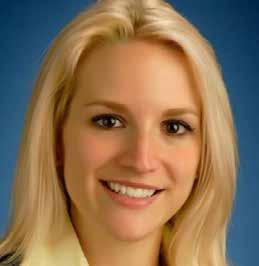
by tara clayton , j . d .
Advertisement
In last month’s Engage, Florida Senior Living Association’s (FSLA) Jason Hand wrote an article on legislative initiatives promoted by FSLA to support sustainability for the industry. In highlighting FSLA’s legislative efforts, Jason references that there are an “ever increasing insurance and litigation costs” impacting senior living providers in Florida. In this article, I write to expand on these claim trends observed in Florida. Specifically, claim trends showing a continued deteriorating litigation environment.
When we talk about claims and lawsuits, we are generally talking about torts. I know what you’re asking right now – what is a tort? No, I’m not misspelling the delicious dessert. A tort, broadly defined, is when one individual or entity (a tortfeasor) civilly wrongs another (a claimant) and that action or omission results in losses or harm to the claimant. A common example of a tort would be a lawsuit by a visitor on the premises who alleges she fell in the parking lot because of a defect in the sidewalk.
In Florida, there are a number of studies depicting a concerning claim trend. In January 2023, the Institute for Legal Reform published a post about their November 2022 study on the economic impact of the current U.S. tort system.1
According to this study, “the cost of the [U.S.] tort system totaled $443 billion in 2020 . . . and $3,621 per household.”2 When looking at Florida households, the study found those costs totaled $5,065 per household - almost 40% higher than the average.3
The above economic findings show there is an impact of tort claims felt beyond the individual claimant and defendant; rather, there is a much broader impact on businesses and consumers within Florida. This ramification is seen in higher prices of goods, services, and even insurance. The senior living industry and the residents they serve are not immune to this and Jason’s article last month identified some of those significant statistics.
As to tort claim trends in senior living, there are a few studies from insurance carriers with portfolios in this industry. The 2022 CNA Aging Services Claim Report: 11th edition, shows an overall continued deteriorating litigation environment for senior living providers countrywide. However, in Florida, that trend is more concerning. The 2022 Oliver Wyman & Marsh General and Professional Liability Benchmark Report for Senior Living and Long-term Care Providers provides a synopsis of the picture in Florida. Specifically, the data reviewed indicates that countrywide, Florida has the highest frequency4 of claims. The study’s analysis shows that in Florida for every 100 occupied units, there will be .696 claims with indemnity or expense for losses occurring in 2023. Notably, the next closest state is California with a frequency of .485 (30.32% lower than Florida). The study’s analysis shows that this high frequency indication is resulting in the highest loss rate5 for Florida as compared to other states and countrywide.
In response to these claim trends, Florida senior living operators have endured increasing insurance premiums and higher retentions in order to help moderate these cost increases. Further, this challenging market results in other providers, outside of the state, avoiding or limiting their presence in Florida. This creates volatility and sustainability concerns from an overall business perspective. Reforms are needed to address these concerns – similar to what we recently saw addressed by the legislature related to property insurance. As leaders in Florida senior living communities, it’s important to work with your executive teams and FSLA to understand ways you can be involved and ensure your voice is heard.
1 U.S. Chamber of Commerce Institute for Legal Reform, November 2022, “Tort Costs in America: An Empirical Analysis of Costs and Compensation of the U.S. Tort System” 2 U.S. Chamber of Commerce Institute for Legal Reform, January 5, 2023, “The U.S. Tort System Costs $443 Billion” 3U.S. Chamber of Commerce Institute for Legal Reform, November 2022, “Tort Costs in America: An Empirical Analysis of Costs and Compensation of the U.S. Tort System” 4 “Frequency” is defined as the number of claims estimated to close with payment per 100 occupied units. 5“Loss rate” is defined as the cost needed to pay indemnity or expense per occupied unit.
by meredith van valkenburgh , msafa, cgb, cpm
We are in an unprecedented time with low unemployment numbers, shrinking labor markets and needs of current staff changing. This makes staffing challenges an everyday issue for most operators and a projected issue without relief in sight. On the ten-year event horizon is another challenge; community occupancy numbers are projected to double. Mark this as a silver tsunami event.
The good news is if we start planning, investing, and training our current workforce, we can be prepared for the future. Last year FSLI through the Florida Legislature secured funding for CNAs in Florida’s Assisted Living Communities. The course covers training and the Prometric exam. The current funding is only until June 30th of this year, time is counting down. Again, FSLI through the Florida Legislature is working to procure this funding for the next State fiscal year, but there are no guarantees on this. Our current program is designed to provide an online course with interaction and a minimal ask of any community. What it provides for the community
The online courses are broken down into weekly course bit sizes requiring about 7.5 hours a week commitment from the learners. We use text messages to communicate with the students on clinical skills, and a half hour learner Zoom call for check in on Friday morning (it is recorded for later viewing for learners that cannot make the Zoom meeting). The mentor for each community is for communicating learner’s progress, learners that leave the community, and mailing textbooks. There is a once-amonth mentor call as a check-in and to take recommendations on improvements we can incorporate.
Statistical data shows employers that have career path development for staff have a higher retention rate. Employees loyalty increases as companies invest in them. The CNA training course provides the first steps in preparing our industry for the future. Together we must invest in our future, whether it is mentoring, meeting skill gaps, or creating education pathways that lead to career advancement opportunities within their current communities or companies. While the funding is available, it can be used as a recruitment AND retention tool increasing the average employee’s length of employment. This will assist on the average employee’s length of employment. Use your next leaders to mentor the ones in the course. Build the skill sets that will be needed in future leadership.
If we were in a conference room, I would ask everyone that is struggling with recruiting, retention, and mission focused employees and I believe everyone would raise their hands. If I asked everyone that is participating in the free CNA training to raise their hands, it would be a small group of those who are preparing for the future of their communities and the future of the industry. If you want to raise your hand for a mechanism for retention, recruitment, loyalty, and career development for staff as a free CNA program, scan the QR Code on the next page or email me at meredith@floridaseniorliving.org.
meredith van valkenburgh , msafa , cgb , cpm Project Director | Florida Senior Living Institute
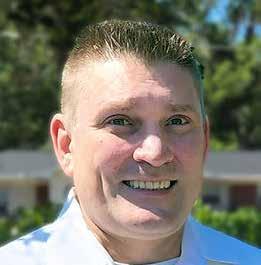
Training includes an online program with course materials, clinical test skills preparation, and paid Prometric test. Each facility may have four (4) learners enrolled at one time.
Three Learning Tracks Available
TEAL TRACK for Experienced
Staff
Coral Track
for Newer Staff
Blue Track
for All ALF Staff
Online Learning Management System
75-Hour Online Training Course
• CNA overview: Basic nursing skills, Client Rights, Communication, Legal and ethical behaviors, and Spiritual and Cultural Issues
• Online coaching for test prep
• CNA Practice Written Exams
• CNA Clinical Skills Review
Google Classroom Setting
2-7 Week Online Training Course
• CNA Prometric material overview
• Basic nursing skills, Client Rights, Communication, Legal and ethical behaviors, and Spiritual and Cultural Issues
• Online coaching for test prep
• CNA Practice Written Exams
• CNA Clinical Skills Review
CNA Apprenticeship Online Program and OJT Training with Community-provided Preceptor/Mentor
1 Year Program with 3 Phases
Phase 1: 12 Week Online Course & OJT
• Detailed overview of care and body systems.
• Body Systems and related Conditions.
• CNA overview.
• Practice Tests.
• Prometric clinical skills material, videos, and practice.
• Online coaching support.
• Apprentices are self-paced and take longer than 12 weeks to prepare to challenge CNA exam.
Phase 2&3
• Combine Advanced skills & knowledge with OJT
by sheri leajean
sheri leajean Executive Editor, Director of Education and Sponsorships Florida Senior Living Association
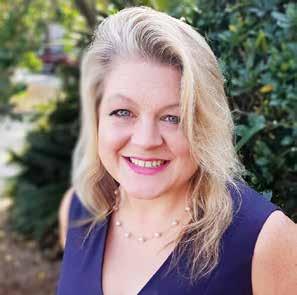
Senior living operators experience a host of stressors each day…the physical, mental, and emotional demands challenge even the most seasoned providers. The mounting pressures are unrelenting and unforgiving. You are constantly aware of what’s going on around you, what needs to be done, but taxed beyond limits and without the necessary resources much of the time. Sound familiar? In a survey of providers, all agreed mental and emotional exhaustion is prevalent across the industry. Dr. Karla Pena-Rosa with Huntingdon Behavioral Health claims burnout is the number awareness and educating staff, so they have tools to manage burnout on a personal level. Implementing stress management and wellness programs to target the problem as an organizational goal is key,” she added. one issue affecting providers and community staff. “The pandemic has altered our workforce and has left the industry with a significant staffing issue that only adds fuel to the fire. We need to address the problem by encouraging
There has always been a certain level of stress associated with operating a senior living community and caring for residents, and, yes, most providers would agree that labor shortages have always been a challenge… but in recent years, senior living has changed drastically expressed, Jamie Merrill, Chief Operating Officer, Sonata Senior Living.

Workforce and retention have always been a focus she said, even when margins were strong, but there was a larger pool of candidates to choose from to support operations. Fast forward to today and there has been a shift. While communities are still focused on the mental, emotional, physical, and social wellness of residents and their loved ones, there’s a new focus now, Merrill said…a focus on staff burnout and emotional fatigue resulting from workforce challenges and labor shortages.
“Occupancy declines along with labor and expense increases have compressed margins so dramatically that many operators exhibit new levels of stress related to the viability concern for their organizations [burnout]. The mental exhaustion that comes with vacant positions, staffing challenges, significantly inflated labor costs, and contract labor usage, all compress the margins further, requiring raised rates and decreased spending,” explained Merrill. It’s troubling watching new and veteran industry leaders abandoning the industry altogether.
Damon Thomas, VP of Operations with Providence Senior Living agreed. “Stress and burnout are taking a toll on the mental health of providers. It’s a vicious cycle… turnover produces labor shortages then inadequate staffing followed by job dissatisfaction and ultimately burnout. The stress is too much, and burnout strikes when those who are highly committed face fatigue and frustration.”
Thomas said Providence is serious about what their associates are going through and what they have experienced over the past three years. Some of Providence’s approaches to address the issues include education on selfcare, work-life balance, how to protect their mental and physical health, increased flexibility in community staffing, free lunches and snacks during the workday, plus a focus on workplace leadership and culture. “We focus on transparency, trust, respect, openness, equality, empathy and support…and, are also mindful about promoting inclusion, collaboration and support, “ said Thomas.
In 2022, Sonata Senior Living made a conscious decision to embrace the need organizationwide and rolled out a “We Are One” campaign. Merrill said the campaign focused solely on team members and organizational culture. “We listened to our teams and helped to put measures and pilots in place that would support the areas causing stress and fatigue to help them improve their work-life balance and results at the same time.” She added that the focus became all teams and individuals having a voice and everyone at all levels of the organization knowing their importance to the brand. “We focused on family,” said Merrill, “residents and their loved ones, team members and their loved ones, prospects and their loved ones, all our family. We take care of our family: mentally, emotionally, physically, and spiritually.”
Moreover, Dr. Pena-Rosa emphasized the importance of access to employee assistance programs, broadening mental health coverage in health benefits, and ensuring a safe and supportive environment for staff members to seek assistance if they require additional resources or accommodations.
Speaker and author Sharon Fekete of The Broken Road to Mental Health, in Life and in Business, also stresses the importance of creating a safe space to speak openly about mental health. So many people fear the stigma associated with mental health. They worry about what people will think, how they may act or judge. Resources need to be shared openly and made available, not hidden away or kept hush-hush. The availability of these services is crucial. Sharon, herself, talks candidly about this piece of the mental health puzzle in her book and weekly podcast. She also reminds us to not only help those who seek help but “don’t forget about your strong friends.” Sometimes they are the ones that need the most help.
What are you doing to break the cycle?
jamie merrill Chief Operating Officer
Sonata Senior Living
Merrill was recently recognized as one of 15 Rising Stars by McKnight’s Long-Term Care News and McKnight’s Home Care for demonstrating an exceptional commitment at the community and corporate level in senior living.
by jamie merrill
“It’s not necessarily the length of our life that determines our legacy, it is more the length of the shadow of our influence that defines what legacy we leave behind” - Boyd
I bet if I asked most people what their legacy is, they wouldn’t be able to generate a quick response because people don’t often think about their legacy. You see, legacies are a funny thing. It’s not something that often comes to mind or is even talked about. In fact, people that leave the greatest legacies may not think about it often either, but they do think about the impact they make. Trying to think about what people will say about you or will think about you after you’re gone can create anxious feelings. Why? Well, as we take a closer look into what we desire our legacies to be, we can’t help but to examine ourselves in the current state, self-reflecting on if that is being achieved. You write your legacy every day, however far too often, you may not think about your ‘shadow of influence’ until after it’s too late. Ask yourself a question, if you intentionally began to think about your shadow of influence and the legacy you want to leave behind each day, would it influence your decisions, behaviors, and actions differently?
Intentionality is defined as “the quality of mental states (thoughts, desires, beliefs) that consist of and are being directed toward something”. Intentional living is the application or art of making and owning our own choices before our choices own us. Intentional living is being specific about what you do or do not do, how you do it and what you allow in your life, always keeping the end in mind. Ever heard someone complaining about their situation and thought to yourself… well, you’re the one who got yourself in to that? While it’s true, and easy to spot in others, many people struggle with taking responsibility for their actions or can’t see within themselves the cause and effect. But there is a way out! Taking time to be intentional, detailing the shadow of influence you want to cast, and comparing that to what you are currently casting. I won’t lie, this can be a trying exercise, but a truly beneficial one that will require some altered choices and actions to get your desired result. So why not do it? Why not start with the end in mind, and create your legacy the way YOU want to be remembered, instead of someone else creating it for you?
Our 1st annual FSLA Leadership Academy did just this, and the impact was astounding. Each member of the academy spent dedicated time determining ‘who’ they are right now, ‘where’ they are right now and ‘where’ they want to go. Trust me, this was not an easy exercise, as they spent much time self-reflecting and digging deep within themselves to determine their ‘real’ person. From there, they began writing their legacies and specifically identified what their desired shadow of influence was? Ask yourself this, do you associate yourself with your position at work? With your title? With the job you perform? If you do, you’re not alone as many see their value as a person in the work they do. This was true with our leadership academy also. But they dug deep and found the true meaning of their legacy, which was emotional and overwhelming (both for writer and the group listening). It is a difficult hurdle to cross, moving past the person you are at ‘work’, as that is not how you will be remembered. No one is going to name your position and title at your funeral (a little morbid, but true). People will remember how you made them feel. Who was important to you and why. What you stood for. Who you were as a family member and friend and the memories and times they cherished with you. People will remember where you spent most of your time, and what made you laugh. They will remember you, as a person. If thinking about those things doesn’t bring a flood of emotions to your surface, dig deeper. Your legacy should be emotional, personal, and intimate as it is only for you.
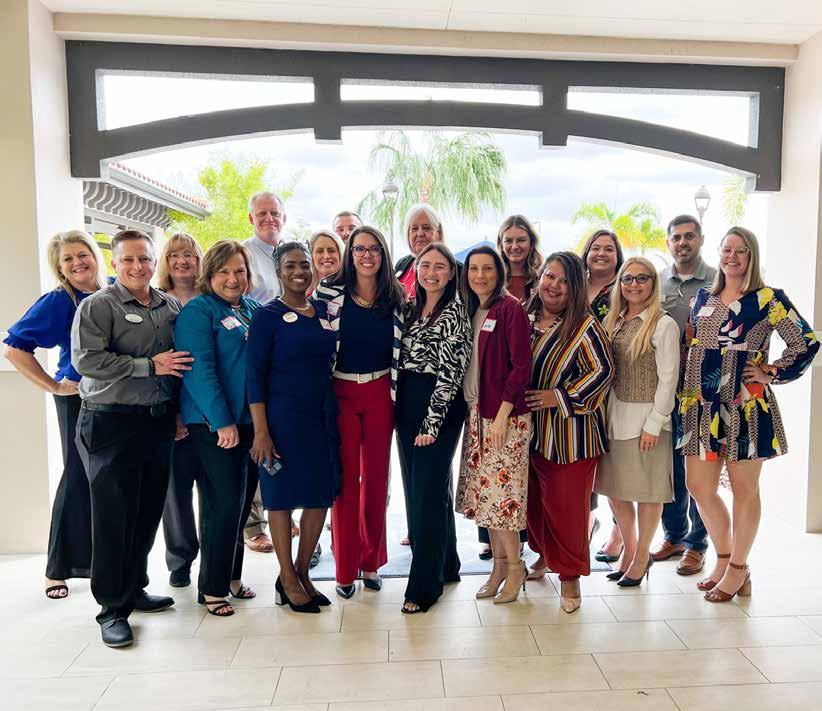
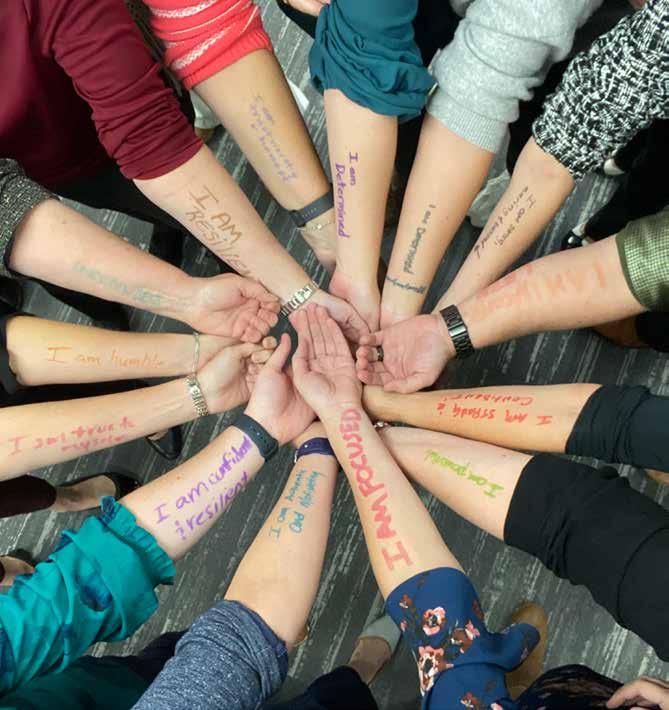
Going through this exercise forces you to look inward and act outward, syncing the two. It can challenge you to change where you spend your time, how you communicate, how you respond and even who you spend your time with, but it is one of the most valuable exercises you will ever go through. BE the person you want to be remembered for. Cast the shadow of influence you are destined to cast and allow that influence to be the reminder every day.








